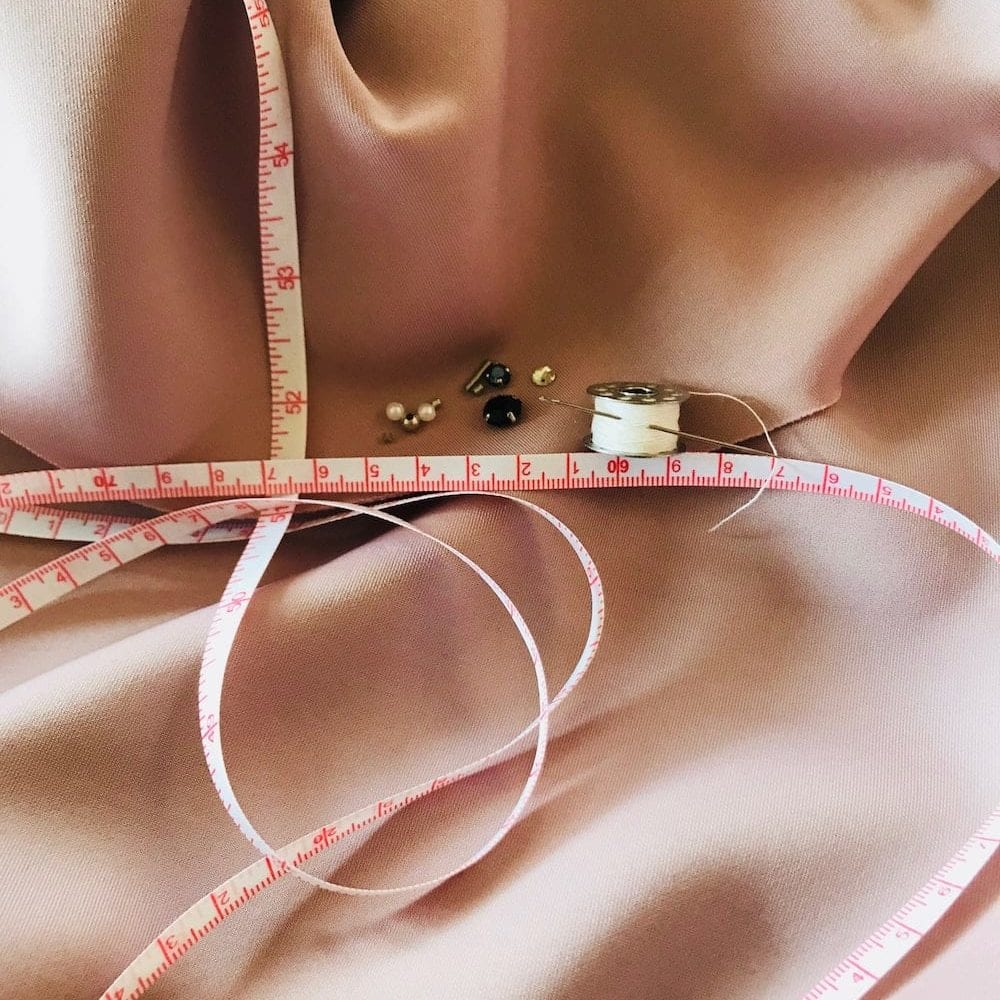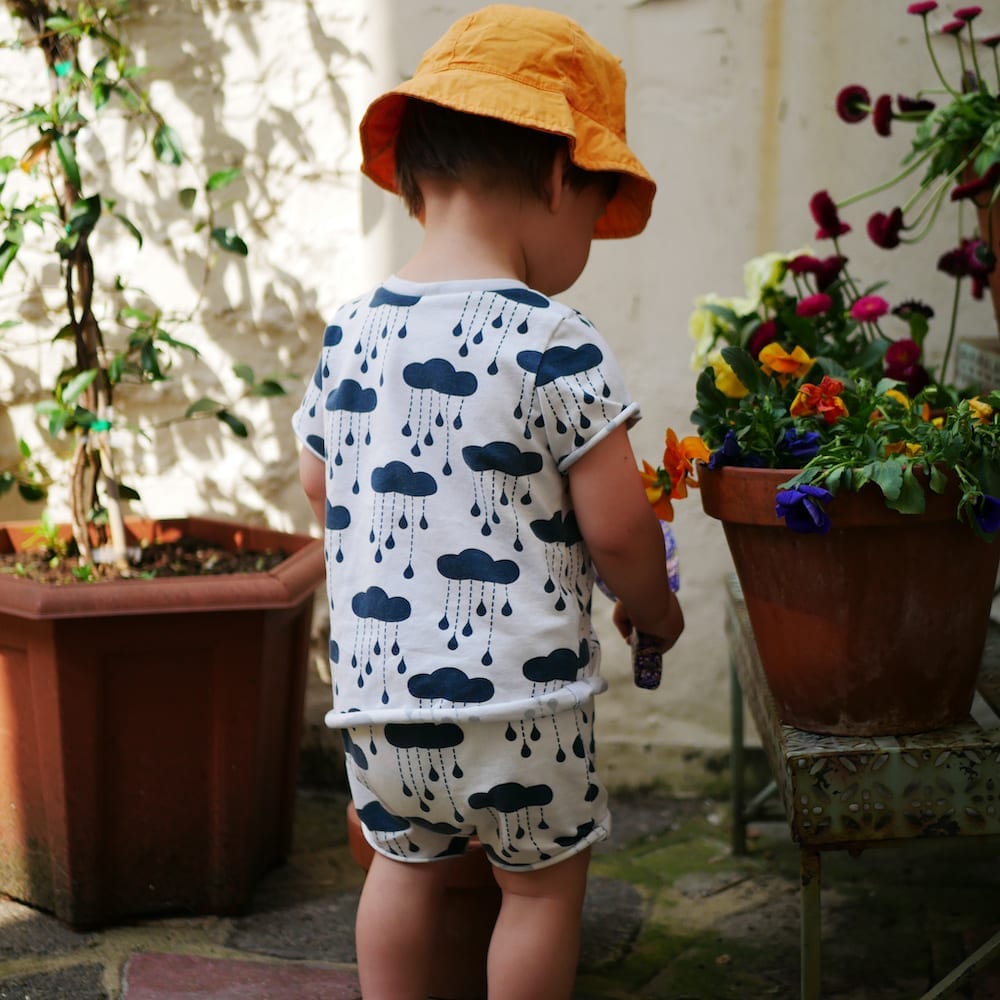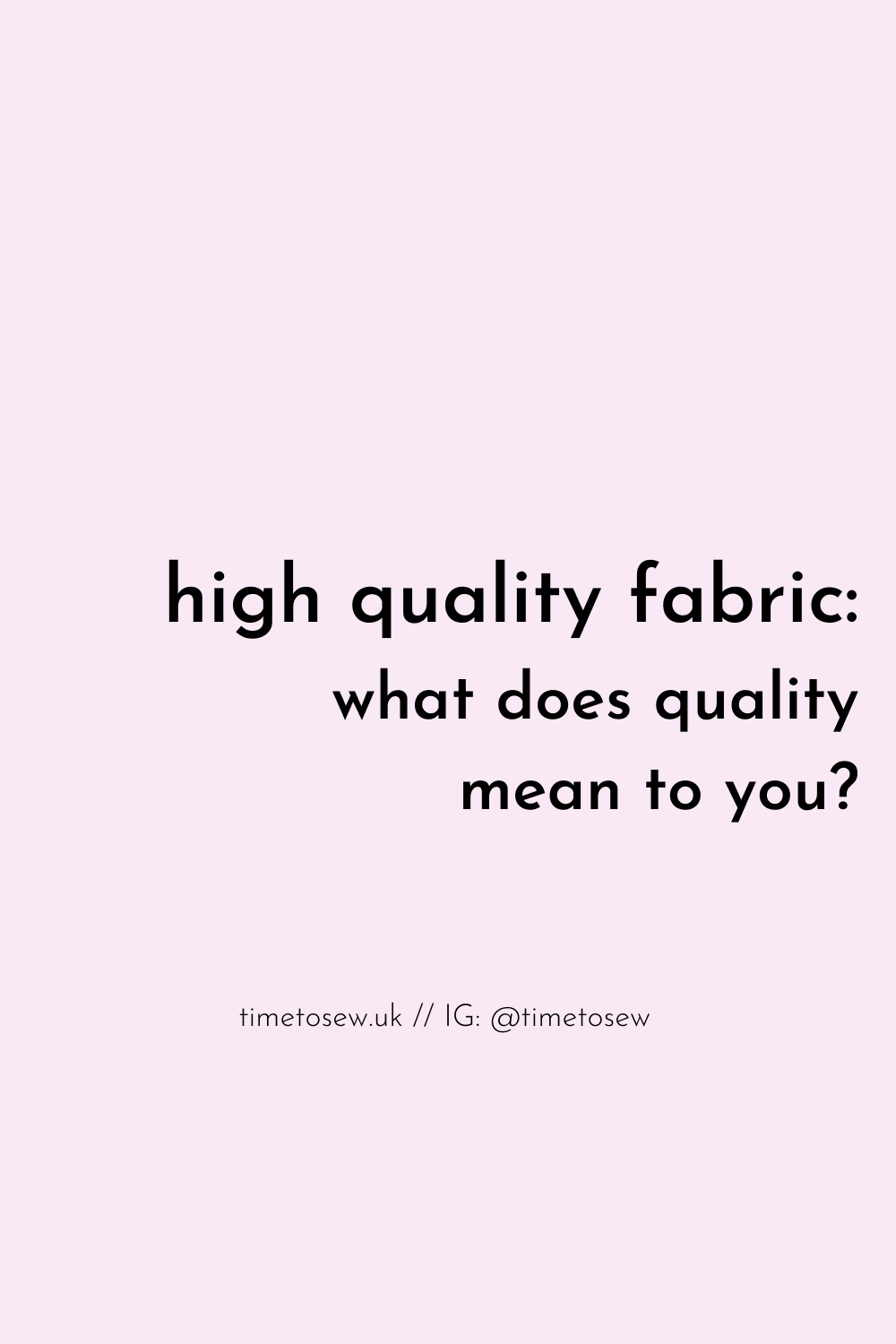What does high quality fabric mean to you? High quality is a very standard marketing buzzword used across all industries, but how do you know for sure if a fabric is going to meet your expectations? I’d say, you don’t.
Is the term quality a great descriptor?
If a fabric is marked as quality, I think I’d like to see some context. Because in most cases you have no idea what this is based on, besides brand and reputation, and maybe a picture or two.
- Beautiful up close pictures can be taken of almost any fabric if you have a camera and decent light. Seeing the weave and drape of the fabric in a beautiful flat lay does not automatically equate to quality!
- The price point is another difficult one. e.g. is a €20 cotton definitely better than a €13 one or is it just marketing mark up?

Speaking of brand, recently a friend of mine bought me some deadstock from a well known sustainable fashion brand that was shutting up shop. I’d admired all the styles and colour palette of the brand for a really long time and the customers gave rave reviews. So, I had certain expectations. But … the colours were not true, there was unexpected slubbiness, the substrate should not have felt itchy even after I put it in the dryer … sometimes it just doesn’t work out!
Quality testing in fabric
From my fashion and fabric studies at UAL a few years back, I learned that there is a lot of testing that goes on at different stages of manufacture. From raw material stage through to post-sewing stage. To fully understand the kind of quality control there is you have to look at every step of the fashion manufacture process. There is a crazy amount of stuff that happens to fabrics before it reaches your doorstep and there are textbooks written on this stuff.
There are a huge number of quality testing standards, standard providers and regulations (you might have heard of ISO testing standards or REACH regulation on chemicals). What your fabric has been through will differ depending on where you live and what the rules are. Here are just a few examples:
Examples of quality tests on fabric/clothing
Shrinkage
Fabric mills can control for shrinkage to a certain extent, e.g. via heat set or chemically via pre-washing. But residual shrinkage is inevitable – that’s the shrinkage percentage that you see written on a fabric listing, e.g. 3-5%. This is a good reason to pre-wash your fabric! But you also need to bear in mind that anything with natural fibres can be prone to continuous shrinking, no matter what a mill does to it. In my experience, wool and to lesser extent cotton seem to be affected when going through washes.
Abrasion / tensile strength
For example in upholstery fabric you’ll often see a number next to a heading “Martindale”. This is essentially a rub test to see how fast it gets worn down – pretty important if you’re thinking about a sofa you want to sit on for 10+ years. Tensile strength does what is says on the tin – it’s a test to see how easily a fabric rips.
Colour testing
For example, resistance to perspiration, effects of cleaning, lightfastness, chlorine (swimwear). But even then, you might have noticed that cotton jersey loses colour pretty fast after a few washes. Polyester jersey? No colour fade. This is just the nature of printing on the fibre, not necessarily a sign of a non performing fabric.
Safety, toxicity
As well as testing for toxic and banned substances, there’s also fire safety, and safety of things like cords, drawstrings, rivets, especially for childrenswear. If you’ve ever seen fabric marked as being “not suitable for childrenswear/nightwear” I’d suggest it’s probably because it hasn’t been through all the required testing. So the risk is transferred to you as the consumer who is sewing it up, to make sure there’s no fire (and that the child doesn’t accidentally swallow a loose button). Which is somewhat ironic given that a lot of prints are geared towards children and babies…
PS. on this point – organic cotton doesn’t automatically mean higher “quality” either!

What matters in a home context?
I am sure you have your own ideas on what is important to you. Most importantly, how much marketing you want to believe? When it comes to writing reviews, I don’t talk much about fabric. Chances are, I write before I’ve worn the thing in question extensively.
Only when I have washed something quite a few times can I see properly how it stands up to washing, drying (line or dryer) and wear and tear. I don’t want to see pilling, excessive colour fade or loss of elasticity (in a jersey garment) the moment I wash it on a 30 degree express cycle and line dry in the shade or a low heat dryer.
It’s not only regular wear and tear either. What you cannot see is any chemical finishings that have been applied (e.g. antipill, antistatic, easy care/low iron). Sorry to say that chemical finishes are not permanent and will wash out!
Finally, fabrics marked ex-designer deadstock are often associated with quality – if it’s ex Dolce & Gabbana or Ralph Lauren or Gucci then it must be good! But I’d encourage you to think about your assumptions on this. There are a number of reasons deadstock was rejected (my post about deadstock is here). e.g. the roll of fabric that was rejected by said brand. Due to lack of performance, flaws, wrong colour, etc. so you may not be getting the premium product you think.
—
That’s all for now, if you have an opinion on this too feel free to share in the comments.
Till next time
Kate x
PIN FOR LATER:

